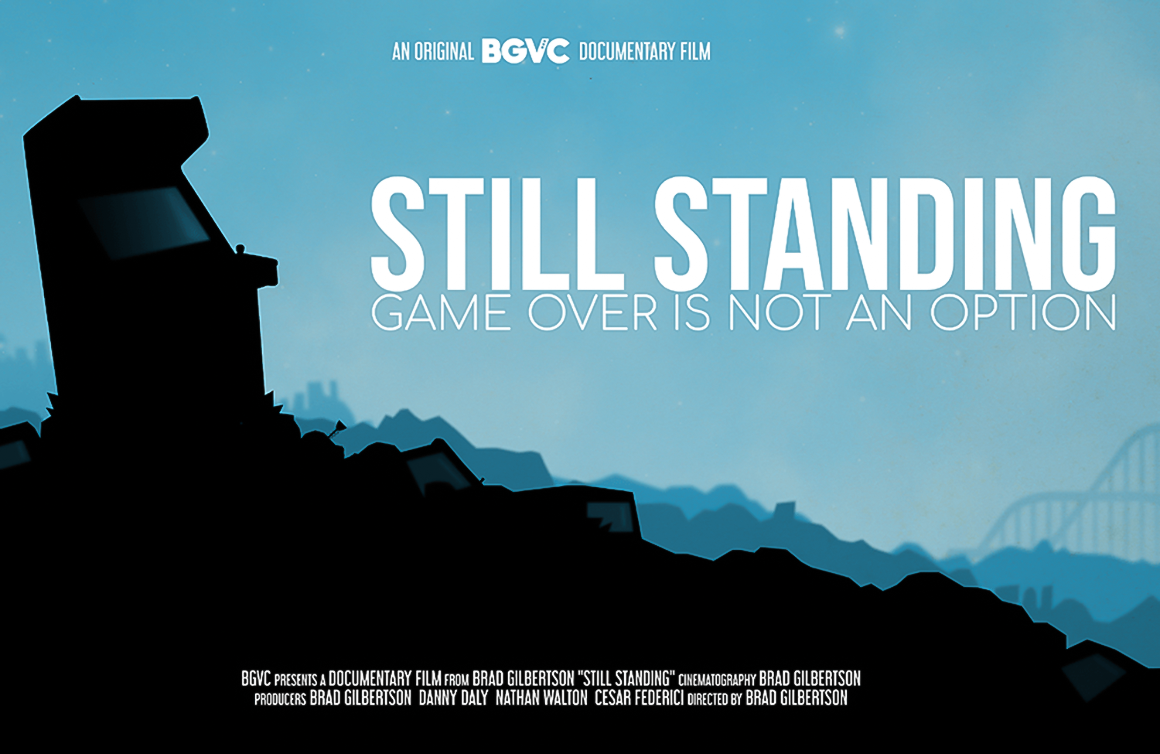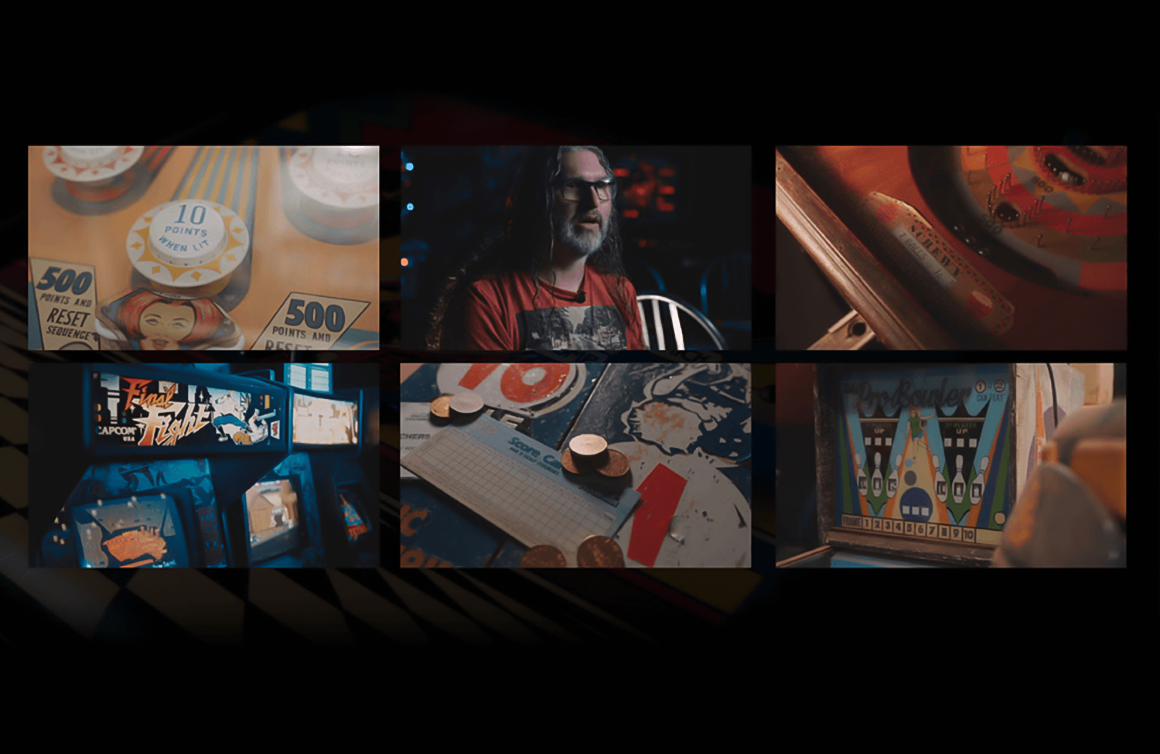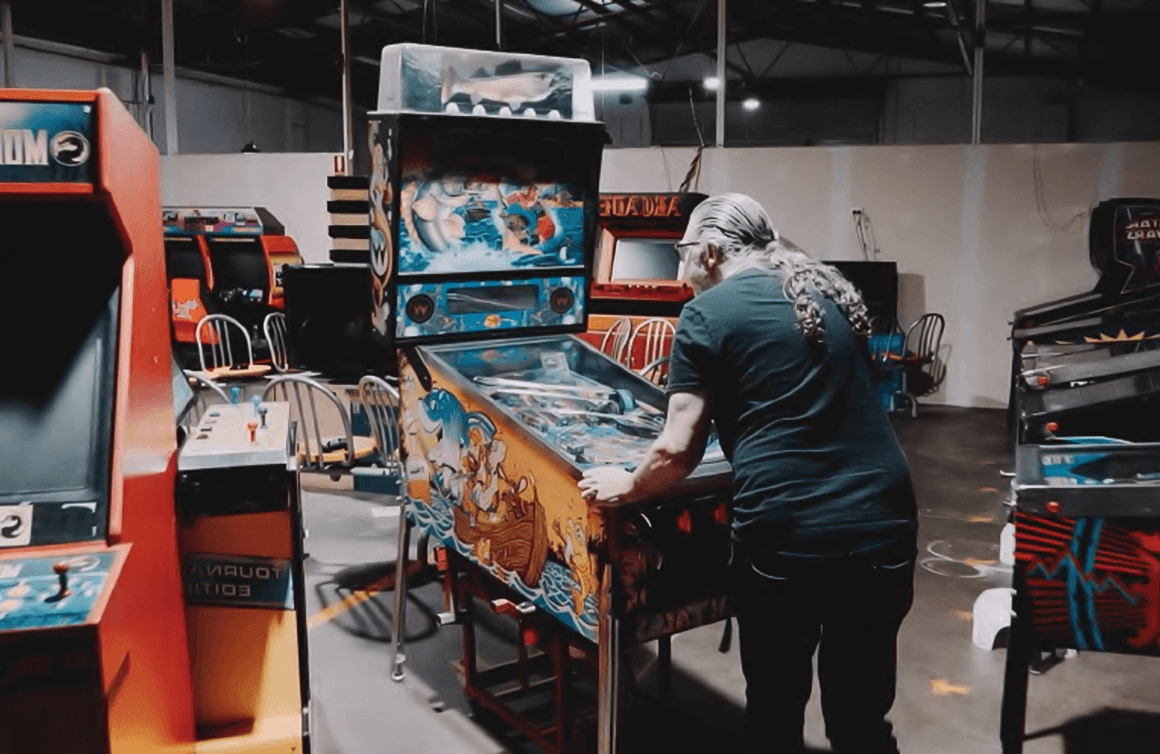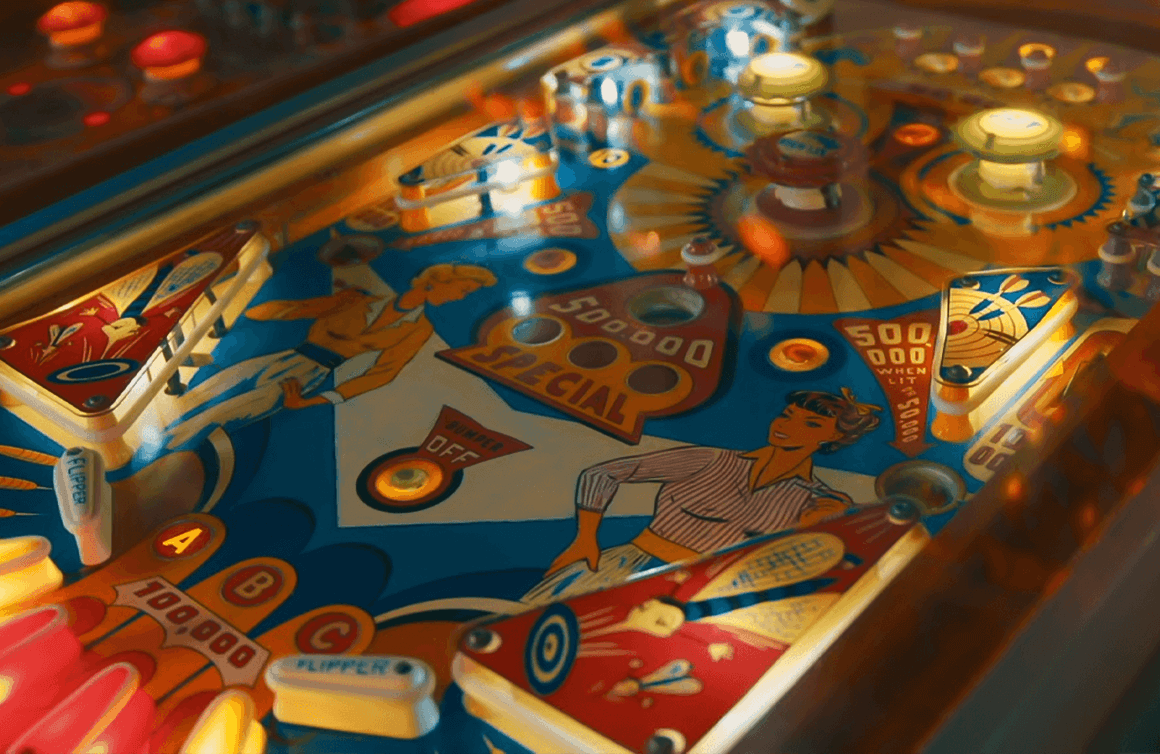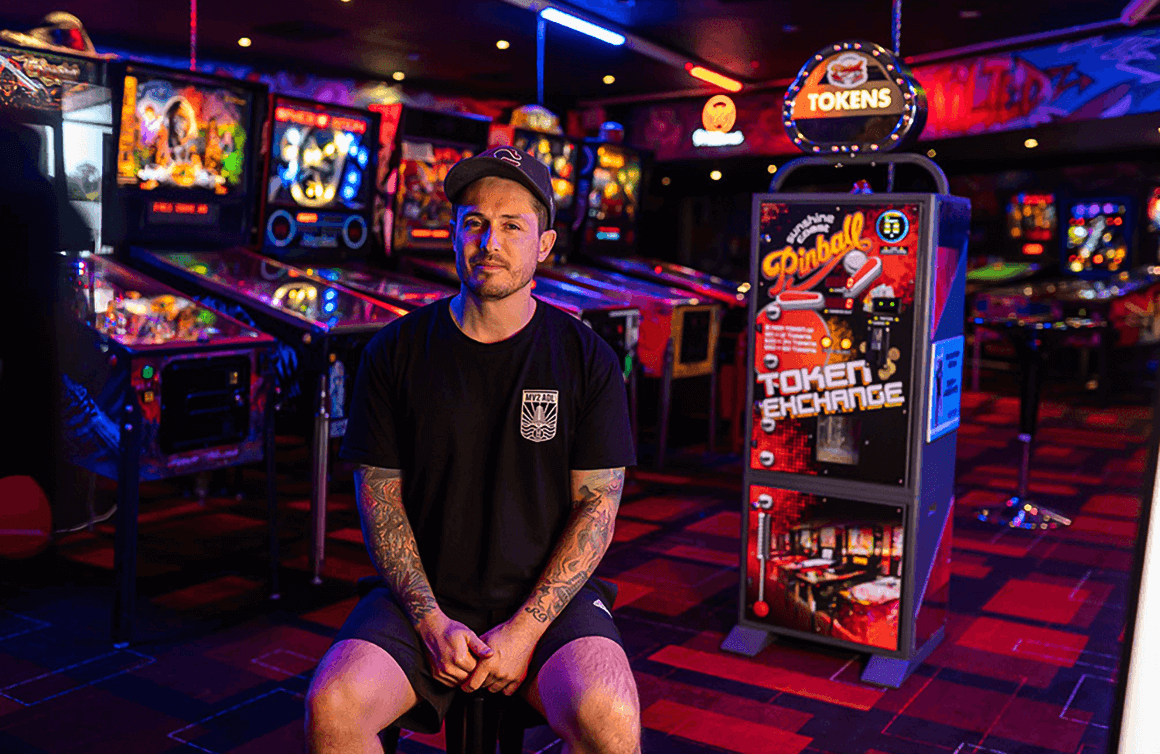Why did you want to make this documentary — what is your personal experience with pinball and arcade gaming?
I was at a bowling alley with my dad one night. It was the same alley I went to as a kid, but I hadn’t been there for over 25 years. The sounds and the smell of the bowling alley really triggered this nostalgia for the Mortal Kombat II game I used to play there. It’s such a significant game. For me, it is the game that secured my lifelong love of video games.
The game wasn’t at the alley anymore. I mentioned to my dad that I was feeling nostalgic and what a weird feeling it was to be there without the game. I wondered where the game went, where all those games went. Surely they didn’t just destroy them all.
The problem is that as venues closed down, there was nowhere for these games to go. Unfortunately, a lot of them ended up in landfills.
The people who are actually keeping arcade gaming running in Australia today — or even going back to the 1970s and ’80s — it wasn’t necessarily the smartest business idea but there was a lot of passion behind it. That’s why I wanted to make the film. I’m a big fan of this stuff myself. There are a few documentary films I really like, such as The King of Kong, Indie Game, and Insert Coin. But there’s nothing really from Australia or about our story of pinball and arcades. It is quite different here. There weren’t many machines or games made in this country. When the industry drop-off occurred in the late ’90s, it had a more significant impact here — there was no sign of anything.
Having worked in commercial video production for the past decade. I wanted to make the film that I wished existed, how I see fit, and include what I wanted to know. There really isn’t any gameplay in it. It doesn’t show arcades in their busy state. Still Standing is more about the people behind the arcades. That’s the aspect I find really interesting.

What compels the people featured in the documentary to safeguard this history?
There’s something driving them that I think must come from childhood.
There’s a guy in the film named Stephen Holmes. He has the largest dedicated retro arcades in Australia. He doesn’t make a cent from the business. He pays his staff and technicians, but he has to work another job. He talks about the arcade being the hardest and most brutal thing he’s ever done, but he has a feeling that if he doesn’t do it, how are people going to share this with their kids?
It feels like for a lot of the people who are doing this, it’s an obligation they have put upon themselves. It’s a high-risk business with very little reward. The reward they get is seeing that one out of 50 people who comes in and is just “wow — this really takes me back”, or they are sharing the experience with their kids. Every arcade owner or operator in the film talks about these moments.

Where is the influence of golden era games seen in popular culture today?
To me, it feels like there’s an endpoint to the golden era and then a new beginning where the ideas from that era are used again in pinball machines and gaming.
Modern-day businesses that have replaced arcades can be very sterile, very plain. I think if anything, the golden era is kind of messy, nothing has to match. The sizes don’t match, the colours don’t match. Modern-day businesses don’t have the golden-era magic about them. You can go to a place that has pinball machines, but if it’s a sterile environment in a bright white room, it just doesn’t have that same energy. You have to embrace the chaos and messiness of the golden era.
We currently have one pinball manufacturer in Australia — Haggis Pinball — it’s the first one in 40 years. They make a world-class product. Haggis has a new game but they are also creating a remake of the Fathom pinball game. I think the two eras — the golden era and modern-day era — are meeting there.
Haggis comes up near the end of Still Standing. The documentary starts with the 1930s, when games such as Baffle Ball came in and we talk about World War II’s effect on the industry at that time. We go through the popularization of pinball and arcades to the industry dying off and coming back. We visited Haggis Pinball in Melbourne for the film. They now have about 25 people working there, but it started as one guy — Damian Hartin — who put together a prototype and took it over to the Texas Pinball Festival. There was a great response to that first machine. Now, they pump out five pinballs a week and people have to wait a long time to get their games — they’ve been received incredibly well. There’s a lot of love that goes into making and testing the games before they’re put out.
I think the golden era influence is in the art style, the imagery, the text.

What elements differentiate pinball and arcade gaming in Australia versus North America?
For Australia, it was a logistical thing — putting these big heavy games onto shipping containers and getting them here before the trend changes wasn’t easy.
We did have a couple of companies in Australia that developed conversion kits. If you saw a Mortal Kombat, NBA JAM, Teenage Mutant Ninja Turtles, and games like that, they were actually in the same cabinet. The operators would buy these generic cabinets and would then purchase the game board and art from the original manufacturer. They figured out that they didn’t have to buy it as a whole. With new games coming out all the time, they could just rotate the game board and artwork.
In the film, Cesar Federici talks about getting a dedicated Simpsons game from the United States. By the time it arrived to him in Australia, it was wrecked, and we went through the process of restoring it. If you bought the game in Australia, which would be a conversation kit, it looked pretty much the same. When I started making the film, I couldn’t tell the difference. Once you actually get to know the games, you can tell the difference between a conversion cabinet and a dedicated US cabinet.
There is one private collector featured in Still Standing, Jeff Grummel, who has between three hundred and four hundred machines — one of the largest private collections in Australia. He went around as the industry was collapsing to save the games that he could. He was picking up games at auctions for ten bucks that are worth thousands of dollars today. He’s one of the most fascinating people to talk to. Jeff had a rough childhood and games were a sanctuary for him, a safe place. His collection is in a building that looks like an airplane hanger it’s so large. He owns twice as many games as any of the big arcades in Australia, and he’s never shared it with the public. He’s very private about it. Still Standing is the first time he’s shared his collection.
While we were filming, Jeff pointed to a cardboard box at the back of the collection. It’s a rare game from 1979 that was manufactured in Canada, a 43-year-old game that he’s owned for 20 years and had never opened. We open it in Still Standing and run the power through it for the first time. It’s a special moment.

The film premiers worldwide on February 22. Where can people watch it?
I’m still fine-tuning the film’s distribution. It will definitely be available on Blu-ray and some video-on-demand platforms. It will be shown in a few cinemas in Australia. People can watch the trailer and find the links to our social media accounts on Linktree.

Connect with the Still Standing community on Facebook to stay up-to-date on details of the documentary’s release in your area.


